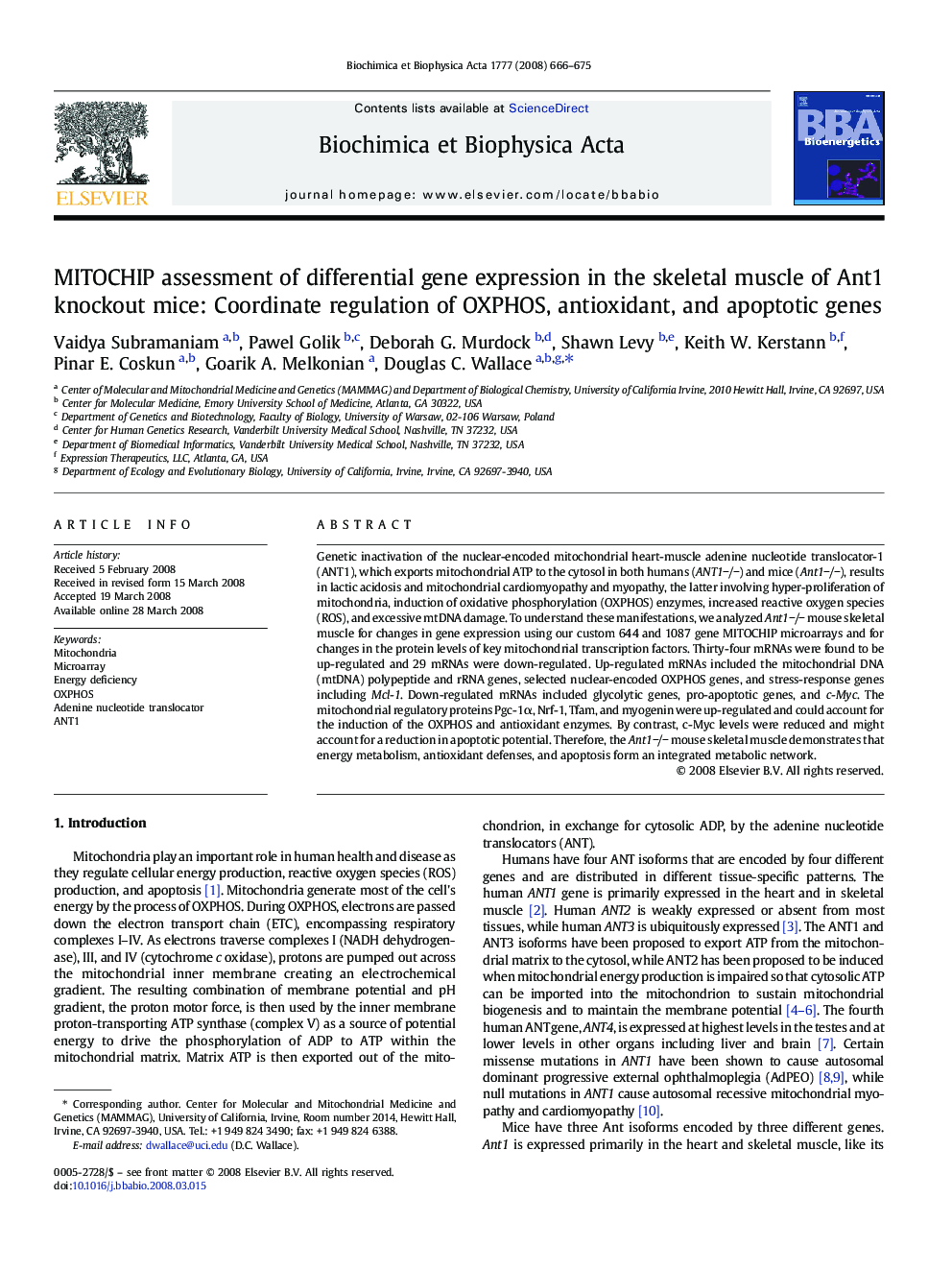| Article ID | Journal | Published Year | Pages | File Type |
|---|---|---|---|---|
| 8299117 | Biochimica et Biophysica Acta (BBA) - Bioenergetics | 2008 | 10 Pages |
Abstract
Genetic inactivation of the nuclear-encoded mitochondrial heart-muscle adenine nucleotide translocator-1 (ANT1), which exports mitochondrial ATP to the cytosol in both humans (ANT1â/â) and mice (Ant1â/â), results in lactic acidosis and mitochondrial cardiomyopathy and myopathy, the latter involving hyper-proliferation of mitochondria, induction of oxidative phosphorylation (OXPHOS) enzymes, increased reactive oxygen species (ROS), and excessive mtDNA damage. To understand these manifestations, we analyzed Ant1â/â mouse skeletal muscle for changes in gene expression using our custom 644 and 1087 gene MITOCHIP microarrays and for changes in the protein levels of key mitochondrial transcription factors. Thirty-four mRNAs were found to be up-regulated and 29 mRNAs were down-regulated. Up-regulated mRNAs included the mitochondrial DNA (mtDNA) polypeptide and rRNA genes, selected nuclear-encoded OXPHOS genes, and stress-response genes including Mcl-1. Down-regulated mRNAs included glycolytic genes, pro-apoptotic genes, and c-Myc. The mitochondrial regulatory proteins Pgc-1α, Nrf-1, Tfam, and myogenin were up-regulated and could account for the induction of the OXPHOS and antioxidant enzymes. By contrast, c-Myc levels were reduced and might account for a reduction in apoptotic potential. Therefore, the Ant1â/â mouse skeletal muscle demonstrates that energy metabolism, antioxidant defenses, and apoptosis form an integrated metabolic network.
Related Topics
Life Sciences
Agricultural and Biological Sciences
Plant Science
Authors
Vaidya Subramaniam, Pawel Golik, Deborah G. Murdock, Shawn Levy, Keith W. Kerstann, Pinar E. Coskun, Goarik A. Melkonian, Douglas C. Wallace,
